Among unpretentious and well growing under different conditions greenery stands out domesticated chlorophytum, some of its varieties settled in almost every home and office. The popularity of the plant is associated with the ability to positively influence the state of air in the room, as well as the lack of special conditions for its cultivation and reproduction.
The top place among flower growers is occupied by Crested chlorophytum, which has a rich shade of green and beautiful flowering leaves that can form a whole jungle of greenery with proper care. An undoubted advantage of this species is its ease of seating, which allows you to acquire several specimens of different sizes in a short time.
Content
Characteristic of flower Crested chlorophytum
The birthplace of the plant is sultry Africa, but today it can be found on almost all continents. Chlorophytum is a perennial herb that came to Europe only at the end of the 19th century and immediately gained popularity due to its rich green color. And the Latin name of this culture Chlorophytum translates as "green plant". This curly flower has such special features:
- narrow and long leaves, reaching 50 cm in length and not more than 3 cm in width, which grow in bunches and create a shaggy crown;
- fleshy roots, which are deepened by 10 cm in a container with the ground;
- the presence of small flowers on a branched inflorescence;
- flowers come in green and white;
- seeds are in capsules;
- inflorescences contain hanging sprouts with children;
- leaves can be both monochrome and with the presence of white stripes.
Because of the long processes, the people call chlorophytum “spider”, and the name “bunch” is closer to the botanists, indicating the specific growth of leaves of this representative of the Lianov family.
The rules for the care of crested chlorophytum at home
Special and thorough care for this flower is not needed. Even a beginner florist can keep it at home, it is enough to know and understand a few basic rules regarding decorative room culture.
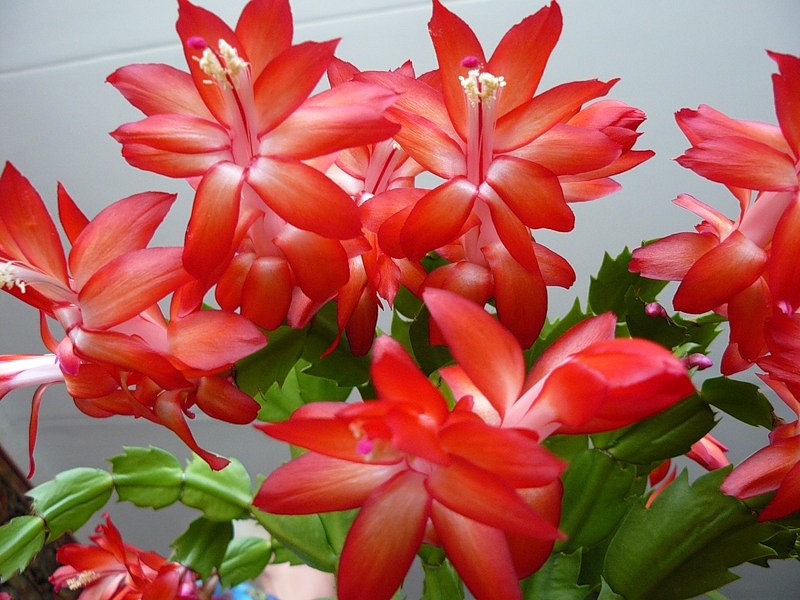 You may be interested in:
You may be interested in:Landing soil
The substrate for growing chlorophytum can be bought at any store selling soil for decorative deciduous, universal soil with a pH level of 6-7 is suitable. You can also cook it yourself, taking turf and leafy soil and adding river sand to it. Humus can also be added to improve the nutritional properties of the substrate. The main thing is that the output is a light and loose mixture.

Since chlorophytum is characterized by powerful roots that develop rapidly, it is better to choose wide pots for planting and always put enough drainage on the bottom.
Lighting
"Spider" easily adapts to any type of lighting and can grow on almost any window or even in a suspended form on the wall of an apartment, office, where there is little light. Being by nature a plant from forests, diffused light, partial shade is best suited for it.
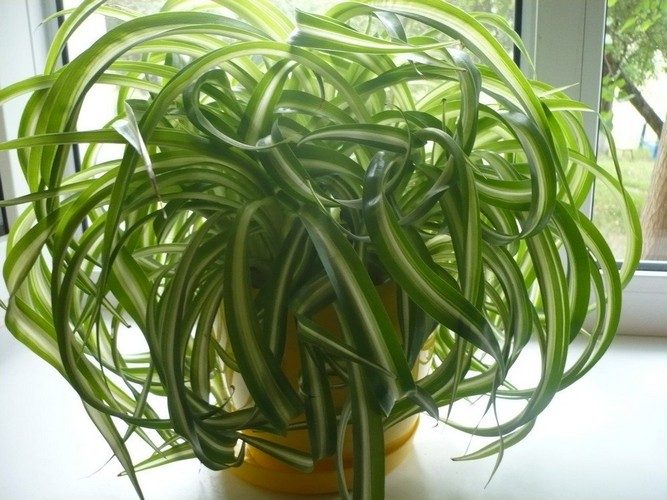
If you want to create the perfect lighting for the plant, you need to place it on the southwestern window sills, where it will delight you with the brightest colors and active development. When exposed to direct sunlight, more frequent watering is required and the saturated green shade of the foliage is lost. And with a lack of sun, the leaf cover becomes pale.
Temperature and humidity
Chlorophytum prefers high humidity and temperature, feels great at + 28 ° C. At the same time, the flower can fully grow and develop in the winter at a temperature of + 12 ° C, but when it drops below + 10 ° C, the plant does not feel comfortable and can signal this drooping foliage.
At any time of the year, it is necessary to spray the flower from the spray gun, it is advisable to use not running tap water, but to defend it a little. The leaves are quite fragile and therefore it is better to choose spraying, rather than rubbing it with wet washcloths, which can harm the plant. An excellent solution would be to use "rain" in the bathroom at least once a week in the summer, and in the cold season not more than once a month.
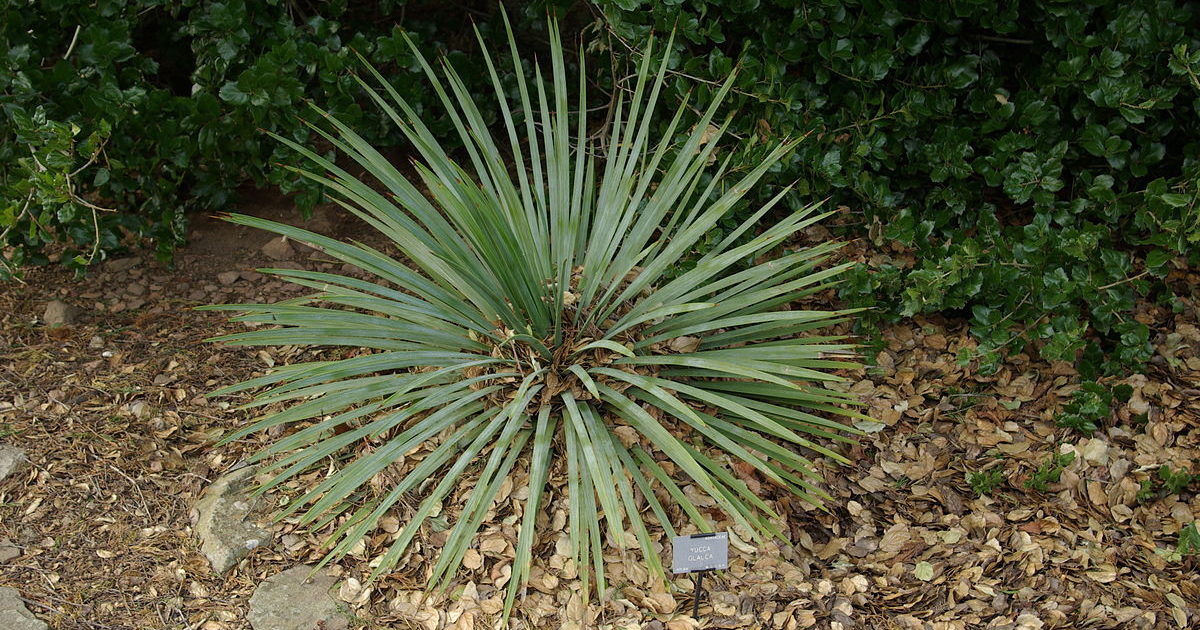 You may be interested in:
You may be interested in:Watering
Despite the fact that chlorophytum loves abundant watering, it can tolerate drought for some time using its internal reserves. The scheme of its standard watering is quite simple:
- every 3-4 days, watering under the root in the summer months;
- in autumn and spring it is enough to moisturize every 7 days;
- in winter - once a week if he lives in a warm room, and a little less often if the room temperature is below + 12 ° C.
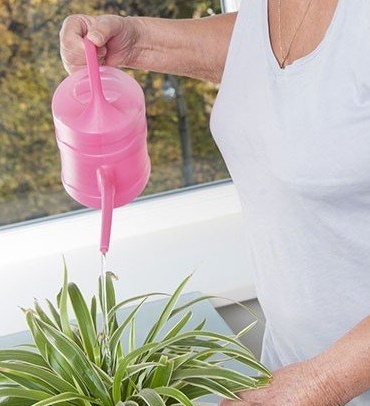
When watering, it is important to consider the amount of fluid used and not overfill the plant, as this can lead to injury and decay of the roots. If water appeared at the bottom after irrigation, it must be poured out.
Top dressing
The main stem of the flower feeds the children, which are formed quite a lot under normal growth conditions. Accordingly, additional forces are needed to ensure that there is enough nutrients for everyone. The plant, of course, will report a lack of minerals in the substrate by drying and yellowing the leaves, but you should not wait for this and it is better to make top dressing in a timely manner.
In this case, this means that chlorophytum should be watered with liquid fertilizers weekly during the period of active vegetation and at least once a month in the resting phase. Universal soluble fertilizers for indoor deciduous flowers, as well as micronutrient fertilizers with iron, potassium and molybdenum, will be appropriate.
Transplant and transshipment
The first five years of life, chlorophytum requires an annual transplant, which should be carried out in the spring. It is best to transship the plant into a flowerpot, the width of which will be several centimeters greater than the previous one. This option allows you to keep the roots of the flower intact, and give it the opportunity to grow with renewed vigor.
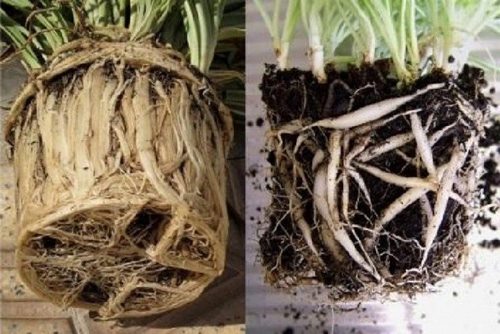
Having prepared the appropriate substrate, it must be warmed up in the oven and only used after cooling to transship. The roots of the decorative culture should be cleaned and held in a weak solution of potassium permanganate for sterilization, after which you can safely immerse them in new soil and continue standard care of the plant.
Breeding
It is very simple to plant a “spider”, it quickly takes root and does not require additional measures when transplanting for the purpose of reproduction, you can do this in three simple ways:
- Use the baby with already sprouted roots, putting her immediately in a flowerpot with prepared soil.
- Put a small pot of earth next to the adult plant and plant a bunch that formed on the antennae directly into it. It should be cut off from the mother flower only after new foliage becomes noticeable.
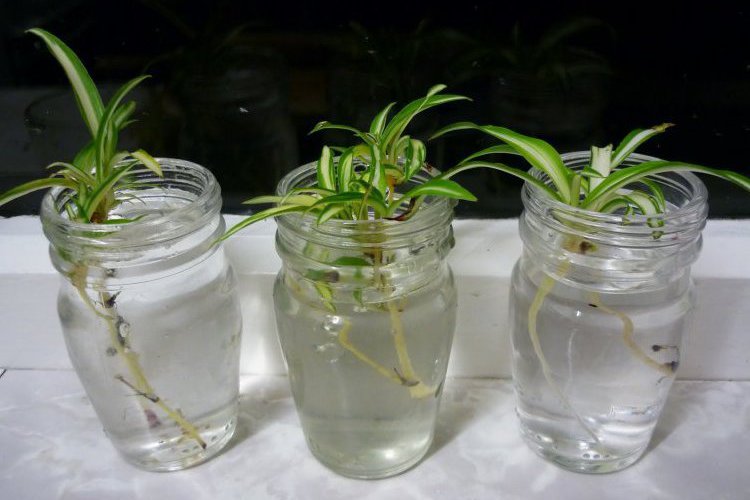
Chlorophytum Reproduction - You can take a small outlet without roots, put it in a glass of water and wait for the roots to appear, and then plant a young sprout in a flowerpot.
Regardless of the chosen method of reproduction, chlorophytum is rapidly gaining strength and goes into the phase of active growth.
Possible problems with growing chlorophytum
With improper care, even such an unpretentious plant can get sick. The main reason for the deterioration of the state of chlorophytum is an excess of moisture in the pot, which can lead to the following problems:
- leaf curl;
- rotting of the roots;
- the worm starts;
- greens begin to turn yellow.
Also, crested chlorophytum may be susceptible to attack by pests such as spider mites, scutes, midges and aphids. To notice these insects is quite simple, while it is necessary to carry out a number of measures to get rid of them. Great for:
- spraying with a solution of laundry soap;
- circumcision of damaged parts of a plant;
- spraying with concentrated infusion of tobacco, wormwood, grated garlic;
- removal of several centimeters of soil on the surface and its replacement with a new substrate;
- processing with special chemicals, for example, Vermitek, Aktofit, Aktara.
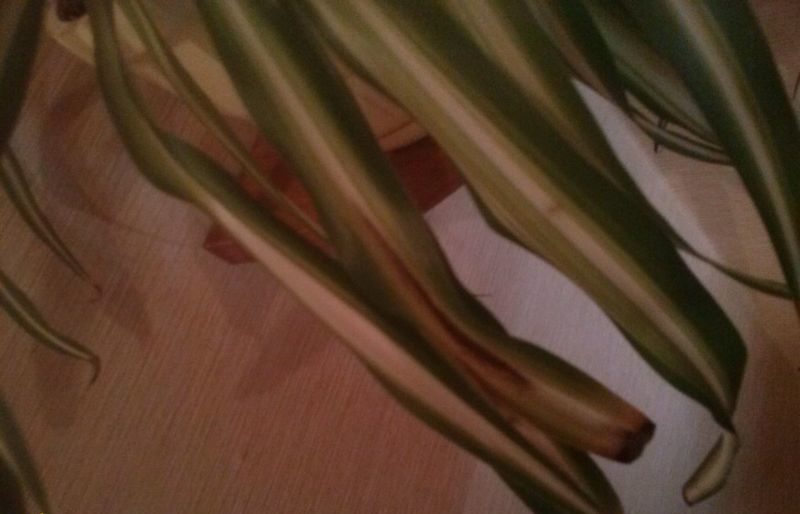
It is also important to pay attention to brown spots, which may be the result of burns from direct sunlight or close proximity to a source of hot air, in which case it is necessary to immediately change the habitat of the “spider”.
The need for fertilizing will be reported by fading or pale babies of the plant, which, with a lack of fertilizers in the soil, quickly come in an unsightly appearance and make it clear that it is time to feed the flower. It can also be a signal for a transplant of chlorophytum into a larger pot.
In general, with proper care of decorative greens of this species, there will be no particular difficulties.
Useful properties of the flower chlorophytum
This type of plants benefits those who decide to grow them, and Crested chlorophytum is no exception. It has a number of properties that are useful in every home or office:
- elimination of formaldehydes in the room;
- the destruction of 80% of harmful microorganisms located near the decorative foliage flower;
- maintaining and maintaining air humidity;
- enrichment of the room with oxygen;
- serves as a good element of vertical decor, not requiring a lot of light;
- in folk medicine, root infusion is used as a laxative.
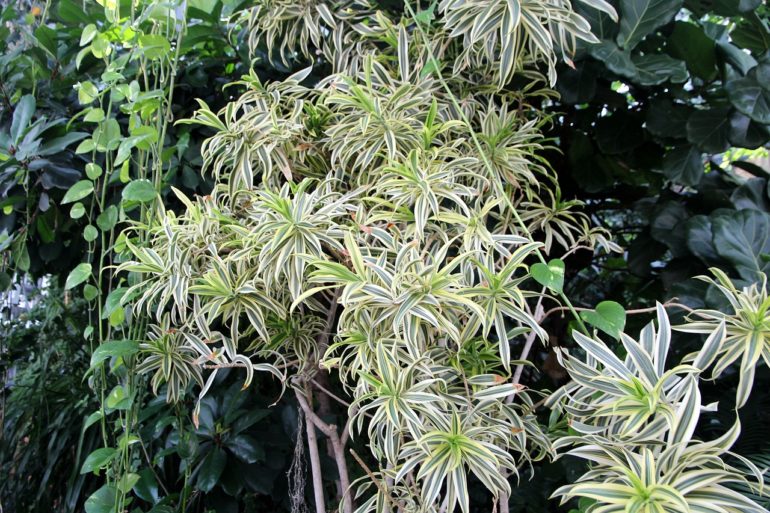
Common questions
 You may be interested in:
You may be interested in:Crested chlorophytum is an unpretentious houseplant that has beneficial properties for humans. He will give the necessary skills in care and beautiful green bushes in a short time, being a picky and useful flower for the home.

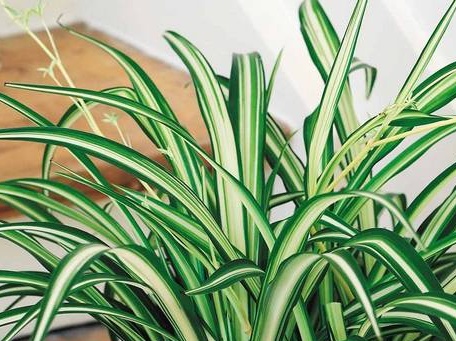
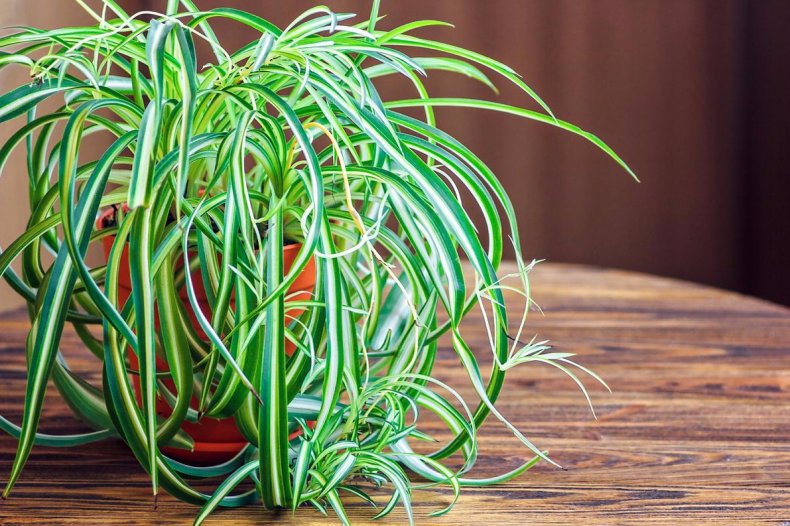
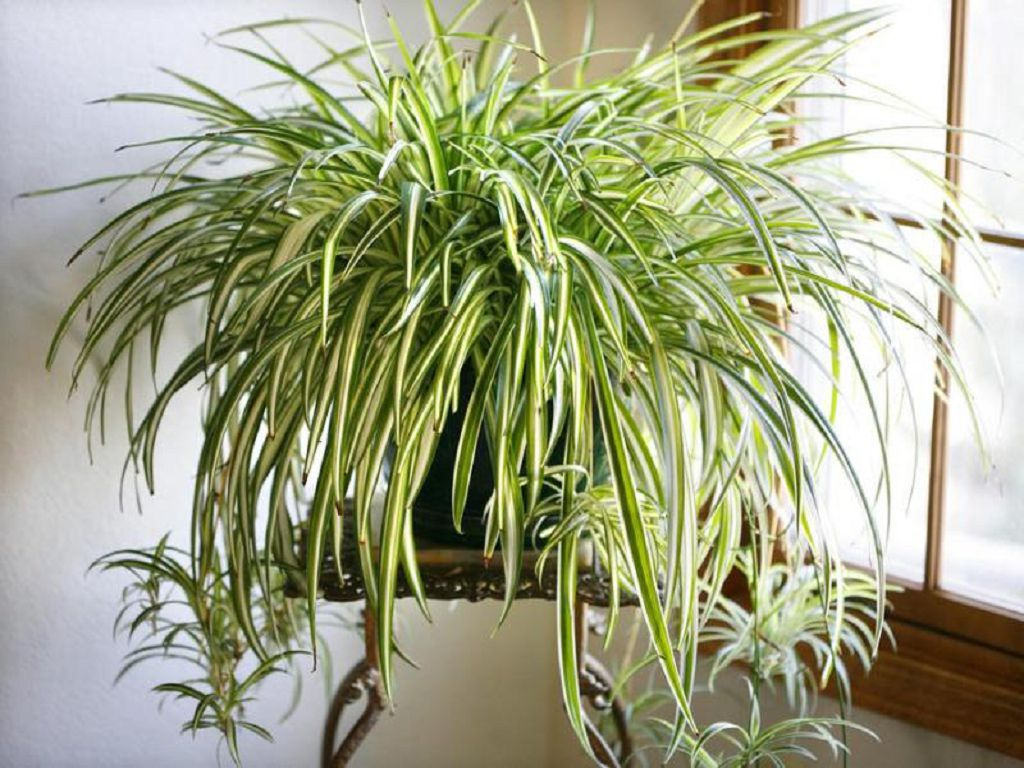



 10 beautiful annuals that bloom all summer
10 beautiful annuals that bloom all summer Sow in the ground, without seedlings: 10 beautiful and unpretentious flowers
Sow in the ground, without seedlings: 10 beautiful and unpretentious flowers Platicodon planting and outdoor care
Platicodon planting and outdoor care Hosta - planting and care in the open ground in the Urals
Hosta - planting and care in the open ground in the Urals